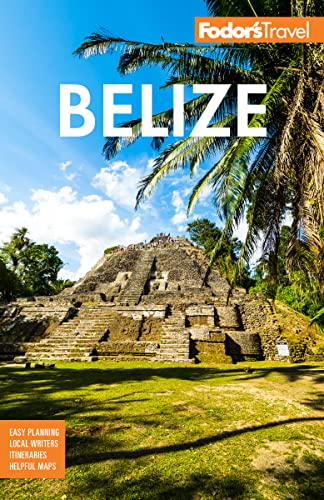Car Travel
Gasoline
Modern gas stations—Shell, Uno, Puma, and other international or regional brands, some of them with convenience stores and 24-hour service—are in Belize City and most major towns and along major highways in Belize. In more remote areas, especially in the south, fill up the tank whenever you see a station. Unleaded gas costs around BZ$10–BZ$12 for a U.S. gallon. Diesel fuel is around BZ$8–BZ$9. Most stations have attendants who pump gas for you. They don't expect a tip, although they are happy to accept it. Most stations now accept credit cards, along with Belize and U.S. dollars.
Prices at Guatemala's service stations aren't quite as high as in Belize. At most stations an attendant will pump the gas and make change. Plan to use cash, as credit cards sometimes aren't accepted.
Parking
In Belize City, with its warren of narrow and one-way streets, downtown parking is often at a premium. For security, try to find a guarded, fenced parking lot, and don't leave your car on the street overnight. Elsewhere, except in some areas of San Ignacio and Orange Walk Town, there's plenty of free parking. San Ignacio has a downtown municipal lot with guarded parking at modest rates–-the lot is behind the Cayo Welcome Center.
There are no parking meters in Belize. In most cities and towns parking rules are laxly enforced, although cars with license plates from another district of Belize or a foreign country may attract a ticket.
Road Conditions
All four main roads in Belize—the George Price Highway (formerly Western Highway), Philip Goldson Highway (formerly Northern Highway), Southern Highway, and Hummingbird Highway—are completely paved. These two-lane roads are generally in good condition. The once-horrendous Placencia Road is now completely paved, as is the Hopkins Road. The San Antonio Road from the Southern Highway near Punta Gorda to the Guatemala border has been upgraded and paved all the way to Jalcate village near the Guatemala border, although an official border crossing may not open until 2018. Signage is good along the main highways; large green signs direct you to major sights. Large speed bumps are ubiquitous, and some of them are unmarked.
Elsewhere in Belize, expect fair to stupendously rough dirt, gravel, and limestone roads. Some unpaved roads, and occasionally stretches of even paved roads, may be impassable at times in the rainy season.
Immense improvements have been made to Guatemala's ravaged roads. A highway from Río Dulce to Tikal has cut travel time along this popular route significantly. In the Petén, the road from Belize to Tikal and Flores is paved and in very good condition. Roads in remote areas are frequently unpaved, rife with potholes, and treacherously muddy in the rainy season. Four-wheel-drive vehicles are recommended for travel off the beaten path. In the town of Flores, expect mostly narrow streets, some paved with cobblestones. Road signs are generally used to indicate large towns; smaller towns may not be so clearly marked. Look for intersections where people seem to be waiting for a bus—that's a good sign that there's an important turnoff nearby.
Rules of the Road
Driving in Belize and Guatemala is on the right. Seat belts are required, although the law is seldom enforced. There are few speed-limit signs, and speed limits are rarely enforced. However, as you approach villages and towns watch out for "sleeping policemen," a local name for speed bumps. The entire country of Belize has only about a dozen traffic lights, and only Belize City, downtown Orange Walk Town, and downtown San Ignacio have anything approaching congestion. In recent years, Belize has been changing many intersections to roundabouts. One unusual aspect of driving in Belize, likely a hold-over from British Honduras days when driving was on the left, is that vehicles turning left against traffic are not supposed to hold up cars behind them; instead, they signal a right turn, pull over to the right, and wait for a break in traffic to turn left.
Despite the relatively small number of private cars in Belize, traffic accidents are the nation's number one cause of death. Belizean drivers aren't always as skilled as they think they are, and drunk drivers can be a problem. Guatemala's narrow roads and highways mean you can be stuck motionless on the road for half an hour while a construction crew stands around a hole in the ground. Always allow extra travel time for such unpredictable events, and bring along snacks and water. In both Belize and Guatemala, be prepared to stop for police traffic and auto insurance checks. Usually tourists in rental cars are checked only cursorily. In Belize, auto liability insurance is mandatory (it's included in the cost of car rentals). In Guatemala, liability insurance isn't required but it's advised. If you observe the rules you follow at home, you'll likely do just fine. Just don't expect everyone else to follow them.




